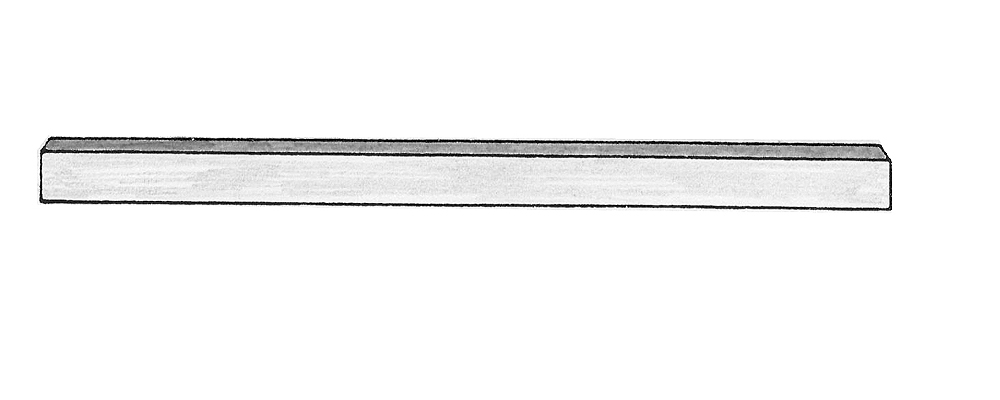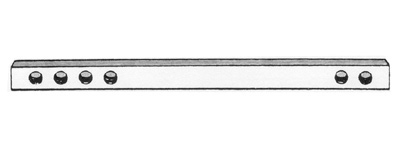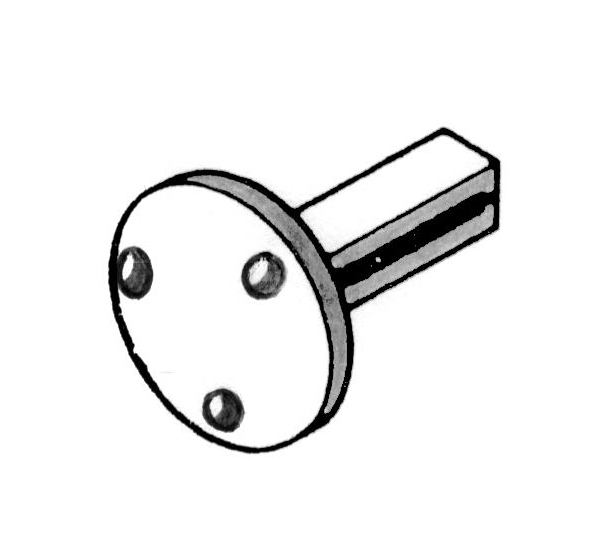Door Furniture Spindles

Click here to view our range of Spindles
Q. What is a door furniture spindle?
A. A spindle, used in door furniture, is a length of square metal bar which connects the door handles on either side of your door together. The spindle, located in the square holes found at the back of your door handles, passes through the tubular latch or mortice lock fitted into the door. When the levers of your door handles are pressed, the spindle rotates and operates the latch inside the door, allowing the door to open.
Q. Are all spindles the same size?
A. They can vary but 8mm (5/16") square has become a general "standard" for spindles which are European manufactured although 7mm square can also be seen particularly those imported from Australia or New Zealand. Many British spindles are 7.6mm (19/64") square. To allow for the difference in sizes found, UK lock manufacturers all produce locks with 8mm followers as standard. (the follower contains the square hole which the spindle passes through). The length of spindles can also vary. Those usually supplied with door handles are long enough to pass through a standard fire door and still have enough length to locate into the back of the door furniture. Situations can arise where it is necessary to use a longer spindle, for instance with an unusually thick door. In these situations it is possible to purchase longer spindles and cut them down to the required length with a hacksaw. Care should be taken not to cut a spindle too short as this can lead to it dislocating in one of the handles causing the affected lever to become inoperative.
Q. Does one spindle fit all styles of door handles?
A. Whilst a plain spindle is the most popular type used, unfortunately, different styles of handles can use different types of spindles. Here are some of the most popular types and their typical uses:
PLAIN SPINDLE
A plain spindle is used with door handles that rely on their rose or backplate fixing to take the pulling force when operating the handles. The spindle passes through the door and locates into the square holes in the rear of the handles. The spindle is not fixed in any way to the handles, and once one handle has been removed, the spindle can easily be pulled from the door. Whilst the pulling force on the handle is taken entirely by the handle backplate or rose, bolt through fixings can be used if necessary to transmit this force to the backplate on the opposite side of the door.
DRILLED & TAPPED
This spindle has a series of threaded holes drilled into it. The spindle is located into the back of the door handle in the usual way, but then a grub screw is fitted into the neck of the door handle and located into the threaded hole of the spindle. This results in the handle being firmly fitted to the spindle and this type of fixing is typically found on round rose lever furniture. The pulling force is safely transmitted to the opposite handle giving less reliance on the rose fixing screws.
THREADED
This type of spindle is mainly used on rim furniture. One knob is fixed permanently to the spindle by means of a grub screw through the neck of the knob. The other end of the spindle and opposite knob is threaded so that this knob can screw on to the spindle and subsequently adjust for door thickness. Once the correct position has been achieved, a second grub screw locates into a plain groove along the threaded end of the spindle. As with the drilled and tapped spindle, the pulling force on either handle is safely transmitted to the opposite handle. This is essential with rim furniture as there is no rose fixing to contain this force on the lock side of the door.
SLOTTED
This type of spindle is slotted at both ends. A self-tapping or hardened screw is fitted through the neck of the door furniture and located into the slot of the spindle. The point of the screw is driven into the slot and serves as a wedge, opening up the spindle slightly for a more secure fixing and to contain the pulling force.
TAYLORS SPINDLE
A "Taylors Spindle" is normally used in situations where only one door handle is being fitted, such as on a cupboard door, and the handle is not required to operate a mortice lock or latch. In this situation the circular end of the Taylors spindle is screwed to the door and the door handle is fitted onto the spindle in the usual way. Because the spindle is screwed to the door, the door handle or knob used will not be able to rotate. Instead of a latch, a ball catch is normally used and the door is pulled open and pushed closed.
Q. How will I know what spindle I will need for my new door handles?
A. All sets of door handles are supplied complete with the relevant spindle required. You would only need to replace a spindle if the original one supplied has been lost or is not long enough to fit an unusually thick door.
Q. My spindles are too long, what should I do?
A. It is quite common for new spindles to be too long, especially when used on thin interior doors, as they have been designed for a range of door thickness which necessitates them being long enough to cope with thicker doors. It is simply necessary to hold the spindle in a vice and cut it down with a hacksaw, but be sure not to cut it too short. Whilst in use, plain spindles can move out of their location holes in the back of one handle into the opposite handle. Once they have disengaged out of the handle your lever will no longer operate the lock or latch - a bit embarrassing if you end up trapped in a room! Ensure your spindle is long enough to fully locate into the handles on both sides of the door at the same time. Drilled & tapped spindles have a series of holes to cope with different door thickness and threaded spindles will also adjust, although it may be necessary to slightly shorten the threaded end on very thin doors. Be sure to leave enough thread on the spindle to locate the handle properly. Similarly slotted spindles can be shortened slightly, usually by taking an equal amount off each end, but be sure to leave enough of the "slot" to locate the handle screw properly and retain the wedging action.
Q. What is meant by a split spindle?
A. A split spindle is used on special locks and latches where the handles are required to operate independently of each other. The lock/latch will have a special split follower to facilitate this function.
DISCLAIMER Door Furniture Direct makes every effort to ensure that the information contained in our FAQs is correct and accurate. We can however accept no responsibility for any errors or omissions or their subsequent effects. Indeed if you find any please let us know, we appreciate any advice or comments to improve these pages.
